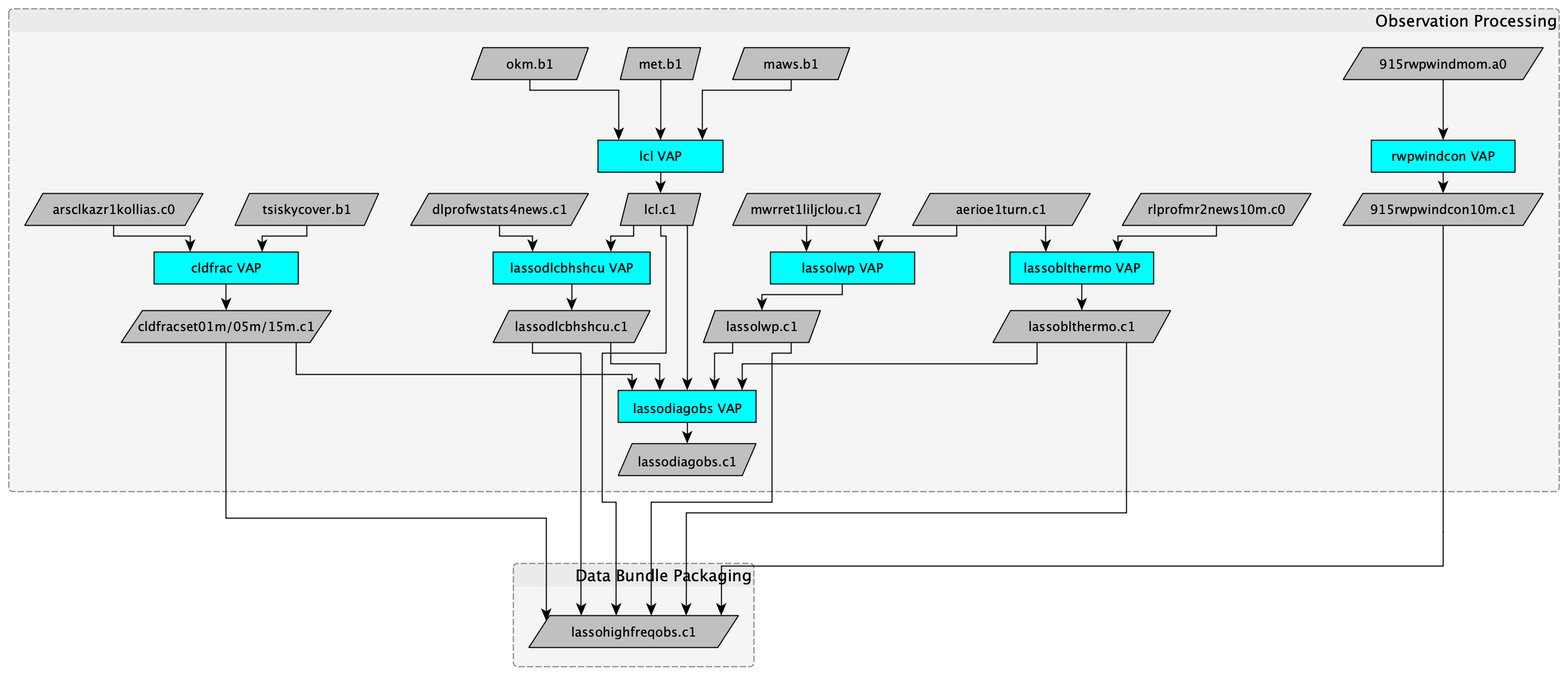New Cases and High-Frequency Observations Released for LASSO
Published: 22 September 2020
The Large-Eddy Simulation (LES) ARM Symbiotic Simulation and Observation (LASSO) data set has grown yet again. Seventeen new cases are now available from the 2019 shallow convection season at the Atmospheric Radiation Measurement (ARM) user facility’s Southern Great Plains (SGP) atmospheric observatory.
The current LASSO data set focuses on shallow convection with LES output provided to help researchers bridge the gap from ARM’s observations to larger scales. This can be valuable for parameterization development, theoretical studies, and observation proxies for unmeasurable quantities.
In addition to the ensemble of data bundles containing LES output and ARM observations, which is similar to previous LASSO data releases, a new set of observations is now included that contains high-frequency observation data. These data are sampled much closer to the native sampling frequency for each retrieval, and they are used to construct the hourly observation data used when calculating the LASSO skill scores.
Over the years, users have requested observation data with higher temporal resolution because they can be useful for examining shorter scales of variability. In addition, some of the derived observations used in LASSO combine different ARM data sets in ways not available in other products. During the last year, the software used to generate LASSO data bundles has been operationalized, which streamlines the processing of the data bundles.
Details on the new value-added product (VAP), called LASSO High-Frequency Observations (LASSOHIGHFREQOBS), are available in the updated LASSO technical document.

Data available in LASSOHIGHFREQOBS include:
- mid-boundary layer temperature and moisture based on retrievals from the Raman lidar and Atmospheric Emitted Radiance Interferometer Optimal Estimation (AERIOE) VAP
- liquid water paths (LWPs) retrieved from AERIOE when it is available or supplemented with LWPs from the Microwave Radiometer Retrievals (MWRRET) VAP when AERIOE is unavailable
- cloud fractions determined from the total sky imager and the Ka-Band ARM Zenith Radar Active Remote Sensing of Clouds (KAZRARSCL) VAP
- cloud-base heights determined from the five Doppler lidars at the SGP
- consensus winds from the four radar wind profilers at the SGP.

Users can download the LASSO data bundles and high-frequency observations from the LASSO Bundle Browser. The high-frequency observations are now available for 2019 LASSO case dates, and they will be released later this year alongside reprocessed 2018 case dates. A full list of available data bundles is provided via the LASSO Metadata Table.
To cite the LASSOHIGHFREQOBS VAP, please use doi:10.5439/1342961.
In addition to LASSOHIGHFREQOBS, which is available only for LASSO case dates, users might also be interested in the complementary Lifting Condensation Level Height (LCLHEIGHT) data set that was recently released. LCLHEIGHT includes estimates of the lifting condensation level at 149 sites around the SGP for all dates since January 1, 2017.
With the release of the 17 new case dates, the total number of shallow convection cases in the LASSO library is 95. This will be the last release of SGP shallow convection data bundles at this point. The LASSO team is putting the shallow convection scenario on hiatus to produce a new scenario focusing on deep convection during the 2018–2019 Cloud, Aerosol, and Complex Terrain Interactions (CACTI) field campaign in Argentina. Look for data sets from this scenario to be available in 2021. Work will also begin on a scenario focused on maritime clouds during the Aerosol and Cloud Experiments in the Eastern North Atlantic (ACE-ENA) field campaign, which took place in 2017 and 2018.
Questions about LASSO can be sent to lasso@arm.gov. Researchers interested in receiving LASSO updates and other related information can join the LASSO email list.
For more information on this release, read the related ARM article.
References: Gustafson WI, AM Vogelmann, Z Li, X Cheng, KK Dumas, S Endo, KL Johnson, B Krishna, T Fairless, and H Xiao. 2020. “The Large-Eddy Simulation (LES) Atmospheric Radiation Measurement (ARM) Symbiotic Simulation and Observation (LASSO) Activity for Continental Shallow Convection.” Bulletin of the American Meteorological Society, 101(4): E462–E479, https://doi.org/10.1175/BAMS-D-19-0065.1.
Gustafson WI, AM Vogelmann, X Cheng, KK Dumas, S Endo, KL Johnson, B Krishna, Z Li, T Toto, and H Xiao. 2020. Description of the LASSO Data Bundles Product. Ed. By Robert Stafford, DOE Atmospheric Radiation Measurement (ARM) user facility. DOE/SC-ARM-TR-216, https://doi.org/10.2172/1469590.
Keep up with the Atmospheric Observer
Updates on ARM news, events, and opportunities delivered to your inbox
ARM User Profile
ARM welcomes users from all institutions and nations. A free ARM user account is needed to access ARM data.


















